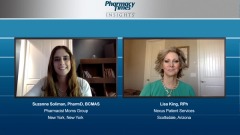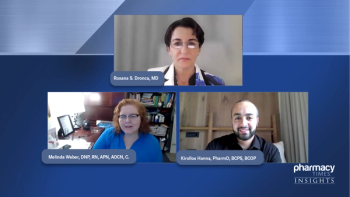
Obstacles in the Way of Pharmacists Wanting to Improve Outcomes
A discussion on some of the obstacles pharmacists may face and advice to improve the utility of Prescription Discount Programs.
Episodes in this series

Suzanne Soliman, PharmD, BCMAS: I think time is critical, and we should not forget to talk about that. A lot of pharmacists do not have the time to compare the insurance and the cash [price], given their workload and what they are doing. I was also fortunate enough to be able to help. I was working in an independent pharmacy with very low volume, so I was able to check almost every single prescription that came in for patients to see what the best price was, and if it could even be a cash price as well. I think time is very important because otherwise, are they [prescription discount programs] easy to use? It depends on how much time you have, right? As a pharmacist, we took an oath; we want to do what is best for our patients, but sometimes, when your workload is very high, you might not have the ability to do that. I do not want to discount that at all either.
Lisa King, RPh: Yes, and I think it also depends on the patient going to that pharmacy. Where I was working, a lot of the patients were older, and so they may not have had access to a computer to go online to get the card or get their identification number. They really vary. Many different prescription discount programs [PDPs] that may just use a patient phone number; for others, you have to go online and register for the card. As a pharmacist, I always like to help patients do that. Then, we know which cards are better than others, because now there seem to be so many different prescription discount cards. Patients would get a card in the mail, and it really was not that big of a savings, or they would come in and say, “I saw I could get my medication for this price.” But I would know that I could actually get it for them for less on a different card. It is important to be aware and have patients be aware as well.
Suzanne Soliman, PharmD, BCMAS: Yes; I agree, because sometimes I’d have patients walk in with a big stack, and I would say, “I’ve never even heard of 90% of these cards. We are not going to go through all of them.” Name recognition and being able to recognize which cards could potentially save them versus which cards are not a good idea to run or to waste anyone’s time with is imperative for pharmacists. I think that is definitely something that could help. Even as a pharmacist, being aware of that and making the technicians aware of those issues as well, has helped. I think those are some ways to improve the utility. I do not know if you have other recommendations on improving the utility of the PDPs?
Lisa King, RPh: I think patients need to have realistic expectations as well, because sometimes the price will vary slightly, by a dollar or two, from the price they are expecting. I think letting them know, this is the actual price of the medication, this is still a great deal, even though it is a dollar or two more—being able to communicate that for ourselves and through the technicians is important. What I found interesting that you said was that you were using these cards at the independent pharmacy you worked at, because it shows you can use them anywhere. I was working more in a chain setting, and you were working at an independent setting, and we were both able to use these cards to benefit our patients.
Transcripts edited for clarity.
Newsletter
Stay informed on drug updates, treatment guidelines, and pharmacy practice trends—subscribe to Pharmacy Times for weekly clinical insights.











































































































































































































